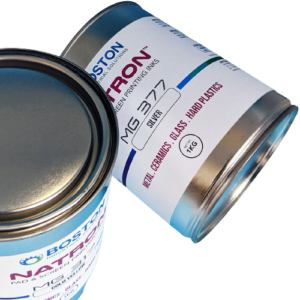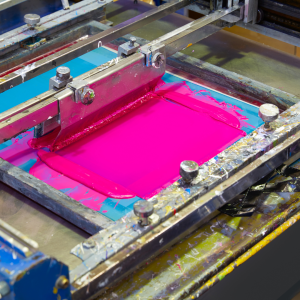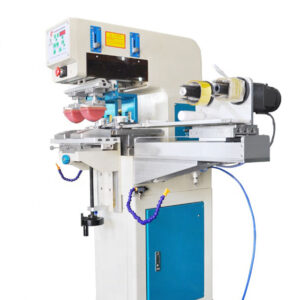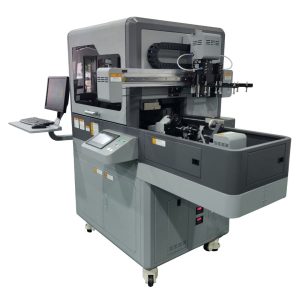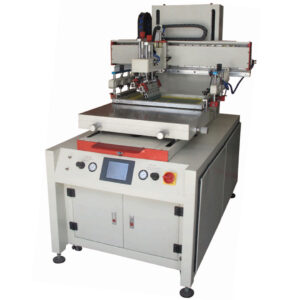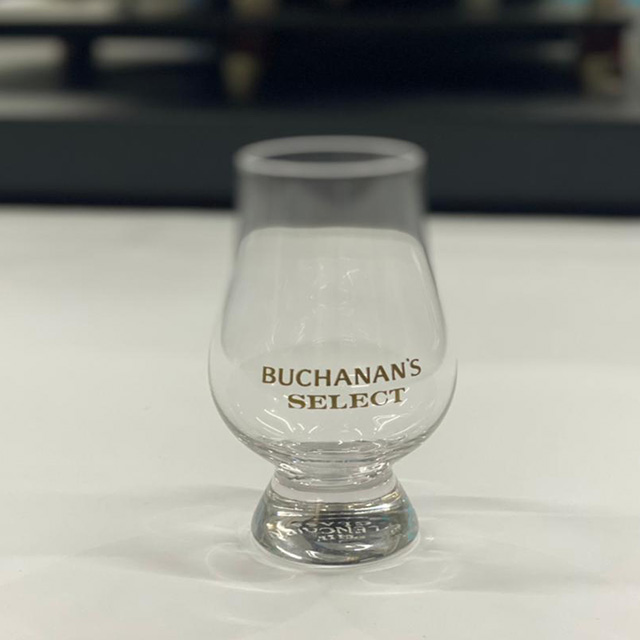Pad printing glass inks
The Natron MG Series is a 2-componet Pad printing ink for glass. This pad printing ink requires the i-240x hardener and a solvent (Type TSM) to print on glass. Once the ink is mixed with these two components, the prints are exceptional. The MG inks score exceedingly high on adhesion. It comes in a variety of opaque mixing colors and special effects. The MG series inks are also Non-Toxic, free from heavy metals, high density, high opacity inks.
The i-240x ink hardener helps to improve ink adhesion and print durability. The solvent on the other hand helps to improve the inks transfer-ability from the pad printing pad onto the glass substrate.
Natron MG Series pad printing ink for glass is a high gloss, high opacity, fast drying ink. This ink comes in 20 standards high (density) opaque colors, 4 metallic shades, 4 neon colors, and 5 highly pigmented process colors. The available standard colors are mixed to produce custom PMS (pantone) or custom colors. This is a key benefit for this pad printing ink. Printing on glass is more difficult because of the light transmission through the clear surface. This is the reason we formulated the ink with very high opacity feature.
Unlike competing inks, the MG inks require only one hit to achieve exceptional opacity. These inks also are scratch-resistant, and dishwasher-safe. This ink will also pass Mil-Spec standards making ideal for Aerospace, Military, Medical, promotional, and industrial pad printing applications.
To achieve dishwasher resistance, the MG series requires heat. Printed glass must be baked for 4 – 10 minutes at 275°F. Note, abrasion resistance testing on the substrate should not be performed until substrates is a room temperature.
How to pad print glass items
Pad printing on glass is not like any other pad printing application. Because the glass substrate is different, it requires an ink for glass—the Natron MG ink series.
To print on glass, the key is to identify the correct ink and the shape of the glass object, and the logo size.
Printing on glassware requires a hollow printing pad for large wrap artworks. For small logos, either a soft round pad or rectangular pad will work best. The silicone printing pad is a key component to successfully pad printing on glass. The printing pad should always be 10 – 15% bigger than the logo. This reduces any distortion in the print. With the right pad, pad printing on glass products is easy.
Learn more about glass printing methods
Glass printing preparation process
To have excellent ink adhesion on glass, it is important to have a clean glass surface. Therefore, it is important to clean the surface prior to printing. Any glass surface contamination will cause ink adhesion problems. Some of the is particularly important to ensure the surface is clean and free from hand oils, mold releases, and even dust.
Commercial printing applications: It is also recommended that if the glassware will be used for commercial applications and be subject to commercial dish washing, the substrate should be cleaned with the Natron™ G1 UV Adhesion promoter. The purpose of the primer is to clean the surface off any contaminants. This will enable the and give the ink the best possible ink adhesion.
Post Treatment / Curing the inks
The MG Series ink will air dry and fully cure within 36 – 72 hours depending on the temperature and humidity. However, for commercial applications, the printed glassware products must be baked for 4 – 10 minutes at 275°F. This ensures commercial dishwasher resistance. The heat activates the molecules between the ink and the glass product hence achieving 100% adhesion.
Typical Glass printing applications
- – Pint glasses
- – Shot glasses
- – Growlers
- – Test tubes
- – Glass coasters
- – Cosmetic bottles
Do you have more question about pad printing? Contact us or visit our support hub for more information.


